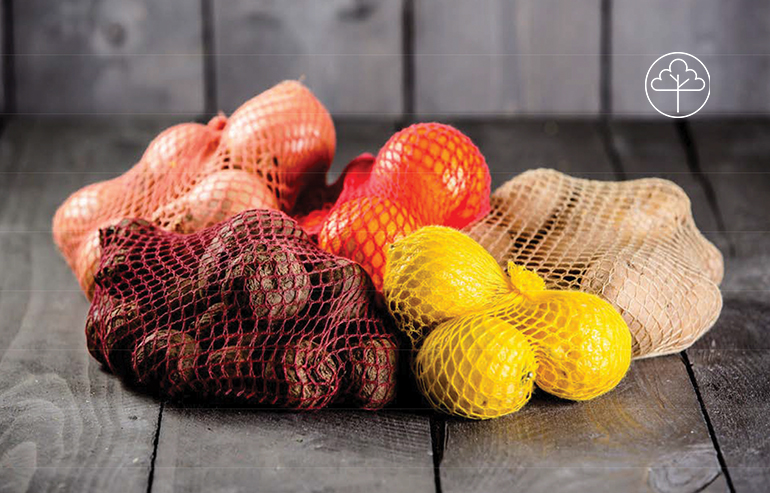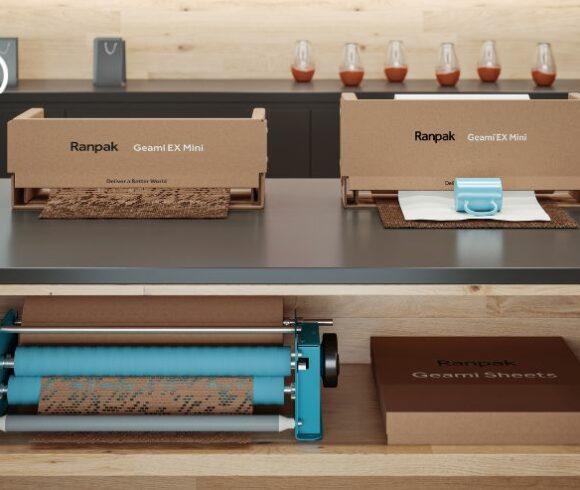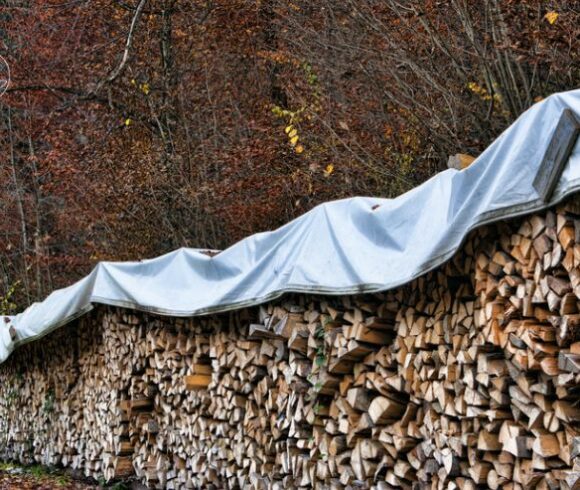27
2023

As the world continues to face the adverse effects of plastic pollution, there is an urgent need for sustainable alternatives.
One such alternative that has started to gain popularity is cellulose tube netting. The cellulose net of HELLAGRO S.A. is made from beechwood, which is a 100% renewable raw material. It is used in packing citrus, potatoes, onions, as well as apples, pears, tomatoes, etc.
In this article, we will take a closer look at plastic nets, their uses, benefits, and impact on the environment.
1. What is a Plastic Net?
A plastic net is a type of net that is made from high-density polyethylene (HDPE). It is designed with a mesh-like structure that allows for easy breathability and visibility of the items packed in it.
These nets are commonly used for packaging fruits, vegetables, and other food products.
2. Types of Plastic Nets
There are different types of plastic nets available in the market. Some of the most common types include tubular knitted nets and extruded nets:
The Tubular Knitted Nets are the essential material used for creating simple packages with clipping wire and wineglass labels, as well as for girsac packages with plastic film (net-film) welded around the net. Tubular nets are used in packing citrus, potatoes, onions, as well as apples, tomatoes, nuts, and even snails. They are compatible with all automatic and semi-automatic packaging machines.
Extruded Nets are highly resistant to packages of various weights and can be produced with properties (color, mesh size, weight, stiffness, etc.) that meet the needs of every packer. The most common types are used in automatic packaging machines which use punnets, and in garlic packaging.
3. Advantages of Using Plastic Nets
Lightweight
Plastic nets are lightweight, which makes them easy to carry around. They are an excellent choice for packaging fruits, vegetables, and other items that do not require heavy-duty packaging.
Breathable
The mesh-like structure of plastic nets allows for easy airflow, which helps to keep the items packed in them fresh for a longer time.
Durable
Plastic nets are durable and can withstand a considerable amount of weight. They are an excellent choice for packaging items that require some degree of protection.
Cost-effective
Plastic nets are relatively inexpensive compared to other types of packaging materials. They are an excellent choice for businesses that need to package products in large quantities.
4. Uses of Plastic Nets
Plastic nets can be used for a variety of purposes. Some of the most common uses include:
Packaging of Fruits and Vegetables
Plastic nets are commonly used for packaging fruits and vegetables. They provide good airflow, which helps to keep the produce fresh for a longer time.
Snack packaging
Plastic nets are also used in multi-packaged snacks such as chips, croissants, milk portions, etc., as well as in the promotions of the companies that produce them, as they are much cheaper than other solutions.
Packaging of Seafood
Plastic nets are an excellent choice for packaging seafood, such as frozen fish and shellfish. They allow for easy visibility of the contents and are breathable – which helps preserve the quality of seafood.
Packaging of Toys
Plastic nets are also commonly used for packaging toys. The mesh-like structure of the nets allows for easy visibility of the contents, making it an excellent choice for displaying toys in stores.
Packaging of other objects
Plastic nets are also used for the packaging of spare parts, components, and bottles, in the furniture industry and elsewhere.
5. Environmental Impact of Plastic Nets
Like most plastic products, plastic nets have a significant impact on the environment. They take a long time to decompose and can end up in the ocean, causing harm to marine life. However, compared to other plastic products, plastic nets have a lower environmental impact. They are lightweight, which means they require less energy to transport, and they can be recycled. Some plastic nets are also biodegradable, which means they break down into natural materials over time. However, it is important to note that not all plastic nets are biodegradable, and some may end up in landfills or the environment, contributing to the plastic pollution problem.
6. Alternatives to Plastic Nets
As the world continues to seek sustainable alternatives to plastic products, there are several alternatives to plastic nets that can be used.
The most sustainable solution is the usage of Cellulose Nets, which are made from beechwood, which is a 100% renewable raw material. The material is certified for home composting and inspected for food use in Europe and the USA. Contains no petrochemicals, no metallic substances and they are reusable, compostable, and biodegradable. Thanks to its breathable and moisture-regulating properties, the bag keeps fruits and vegetables fresh for 2–3 days longer.
7. How to Dispose the Plastic Nets
If you have plastic nets that are no longer usable, it is essential to dispose of them properly.
Recycle: make sure to clean and dry the nets before recycling them.
Reuse: plastic nets can be reused for various purposes, such as storing items or as makeshift laundry bags.
8. Conclusion
In conclusion, plastic nets are a popular packaging material that is used for various purposes. They are lightweight, breathable, and cost-effective, making them an excellent choice for businesses and individuals. However, they have a significant impact on the environment, and sustainable alternatives should be explored.
By choosing alternatives such as cellulose nets, we can reduce our impact on the environment and move towards a more sustainable future.
9. FAQs
A) Are plastic nets recyclable?
Yes, they are recyclable.
B) How long do plastic nets take to decompose?
Plastic nets can take several years to decompose, as with most plastic products.
C) Can plastic nets be reused?
Yes, plastic nets can be reused for various purposes.
D) What are some sustainable alternatives to plastic nets?
The most sustainable solution is the usage of Cellulose Nets.
E) Are all plastic nets biodegradable?
No, not all plastic nets are biodegradable. It is essential to check the packaging and label to determine if they are biodegradable.




